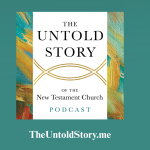A recent Christianity Today cover story profiling the perpetual adolescence of American Christianity asked “When Are We Going To Grow Up?”
For those of us over 40, it’s now or never. Those of us in this age group may have grown up hearing that we weren’t supposed to trust anyone over 30, but most of us discarded this bit of wisdom around the time we turned 31.
 Or did we? When it comes to church, it seems many of us internalized this bit of 1960’s-era youth power doggerel. Over the span of a couple of generations, we worked with the determination of revolutionaries to dismantle old structures, challenge tradition, and reengineer worship to reflect our preferences, experiences and understanding of God. It seemed good to us to ditch the hymns, stained glass and choir robes, move away from Sunday evening services, toast-dry sermons and dressing UP for church in our relentless quest to discover the poor relation of the Fountain of Youth – the Holy Grail of Relevance. By and large, we succeeded.
Or did we? When it comes to church, it seems many of us internalized this bit of 1960’s-era youth power doggerel. Over the span of a couple of generations, we worked with the determination of revolutionaries to dismantle old structures, challenge tradition, and reengineer worship to reflect our preferences, experiences and understanding of God. It seemed good to us to ditch the hymns, stained glass and choir robes, move away from Sunday evening services, toast-dry sermons and dressing UP for church in our relentless quest to discover the poor relation of the Fountain of Youth – the Holy Grail of Relevance. By and large, we succeeded.
(I’ll confess that I was one of those who cheered the arrival of ear-splitting modern worship music and dressed-down, accessible messages in church.)
One thing I heard from a number those who’d responded to the 40+ And The Church survey I did a few weeks ago was that their congregation’s relentless focus on catering to the felt needs and market tastes of a young demographic left them feeling as though there was no place for them in their churches. Some mentioned worship style issues (“The music is too loud”), others mentioned the fact that the church’s programming focused on families with kids under age 18. As Boomers supplemented or replaced evangelism with marketing, we grew organizations that were marked by responsiveness to the felt needs of our target market. This worked as long as the target market was us.
We know many of our kids are disenchanted and disconnected from the church cultures we helped to create. And my unscientific survey reminded me that our kids aren’t the only ones who no longer feel welcome in their local churches. Though there have always been voices from within our ranks asking us to consider what we were sowing during the rise of the Evangelical movement in this country, they were drowned out by all of our (apparent) numerical success.
We sure did plant a lot of seed during those years, but what we’re sowing today may not look anything like what we imagined it would.
Andrea Palpant Dilley’s recent essay entitled Change Wisely, Dude offers some sober insight from the perspective of a younger Evangelical about our movement’s addiction toward tinkering with church:
For some, the instinct is to radically alter the old model: out with the organ, in with the Fender. But as someone who left the mainstream church and eventually returned, I’d like to offer a word of advice to those who are so inclined: Don’t. Or at least proceed with caution. Change carefully; change wisely, with thoughtfulness and deliberation. What young people say we want in our 20s is not necessarily what we want 10 years later.
Dilley and her family returned to a more traditional church. Some of us over 40 have done the same. Others have chosen the route of less involvement in our contemporary churches. Some have exited entirely. Some continue to stay connected in the churches they helped to build.
I am wondering if beyond the personal decision to move on or stay put, might there be some conversations some of us over 40 might want to have with those in charge of the churches we helped to build with our attendance, our giving, our prayers and our emotional energy? If we recognize that some of the seed we sowed was planting plastic flowers instead of growing fruit that remains, would it be helpful to acknowledge this to those in charge at the churches we built – even if those running these churches are cheerfully working for the Lord within these structures? If we had these sorts of conversations, what would they even look like?
Your thoughts?















